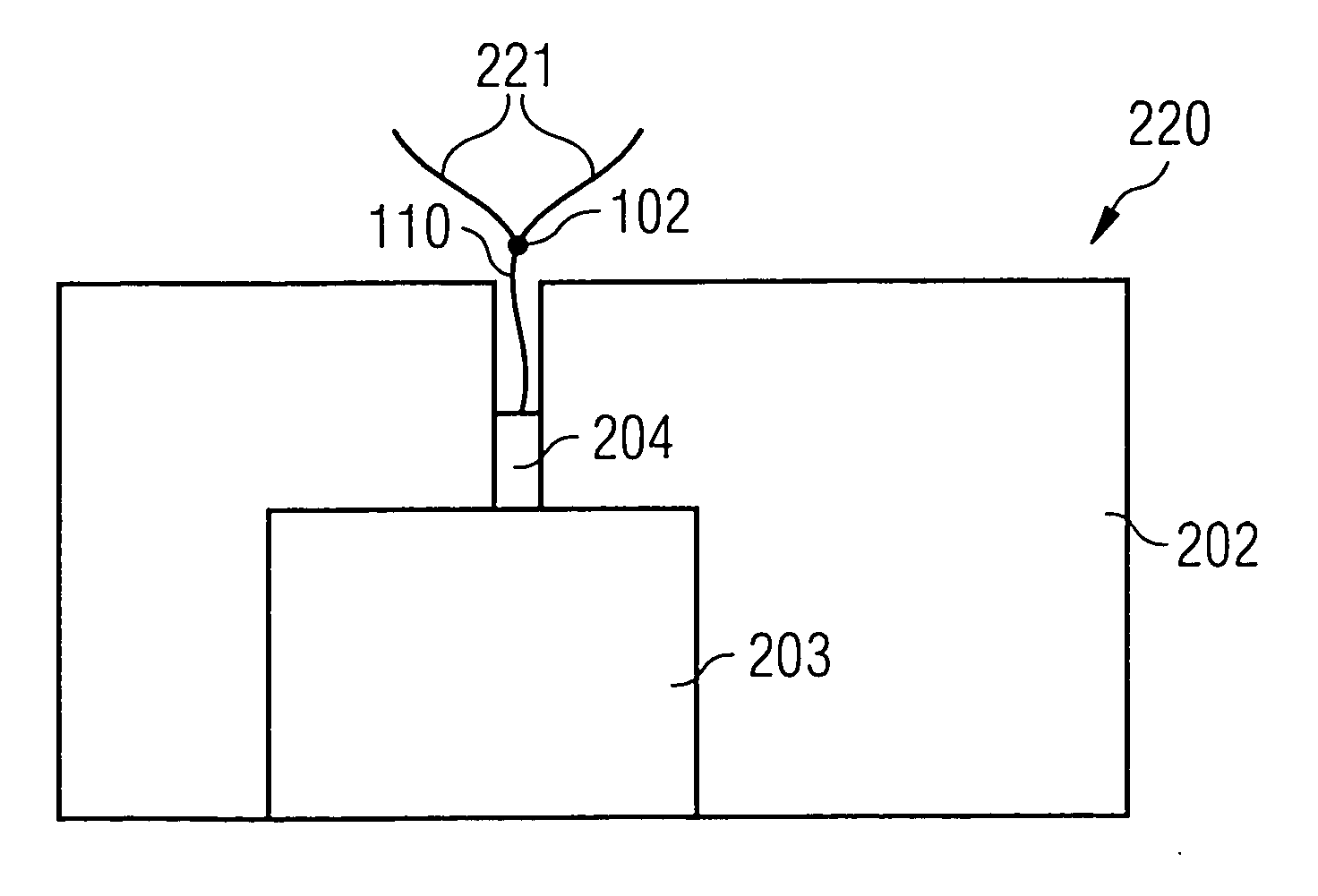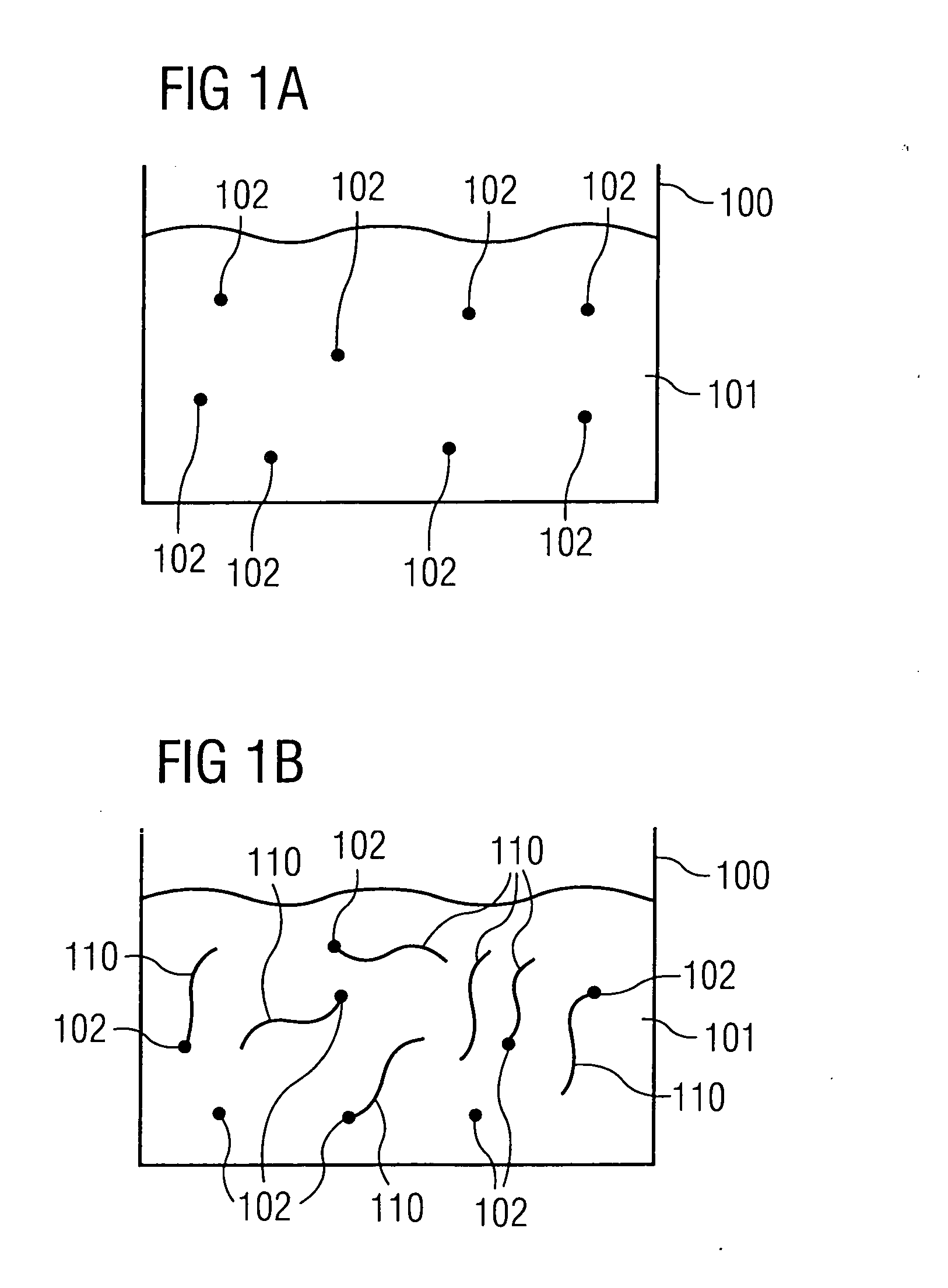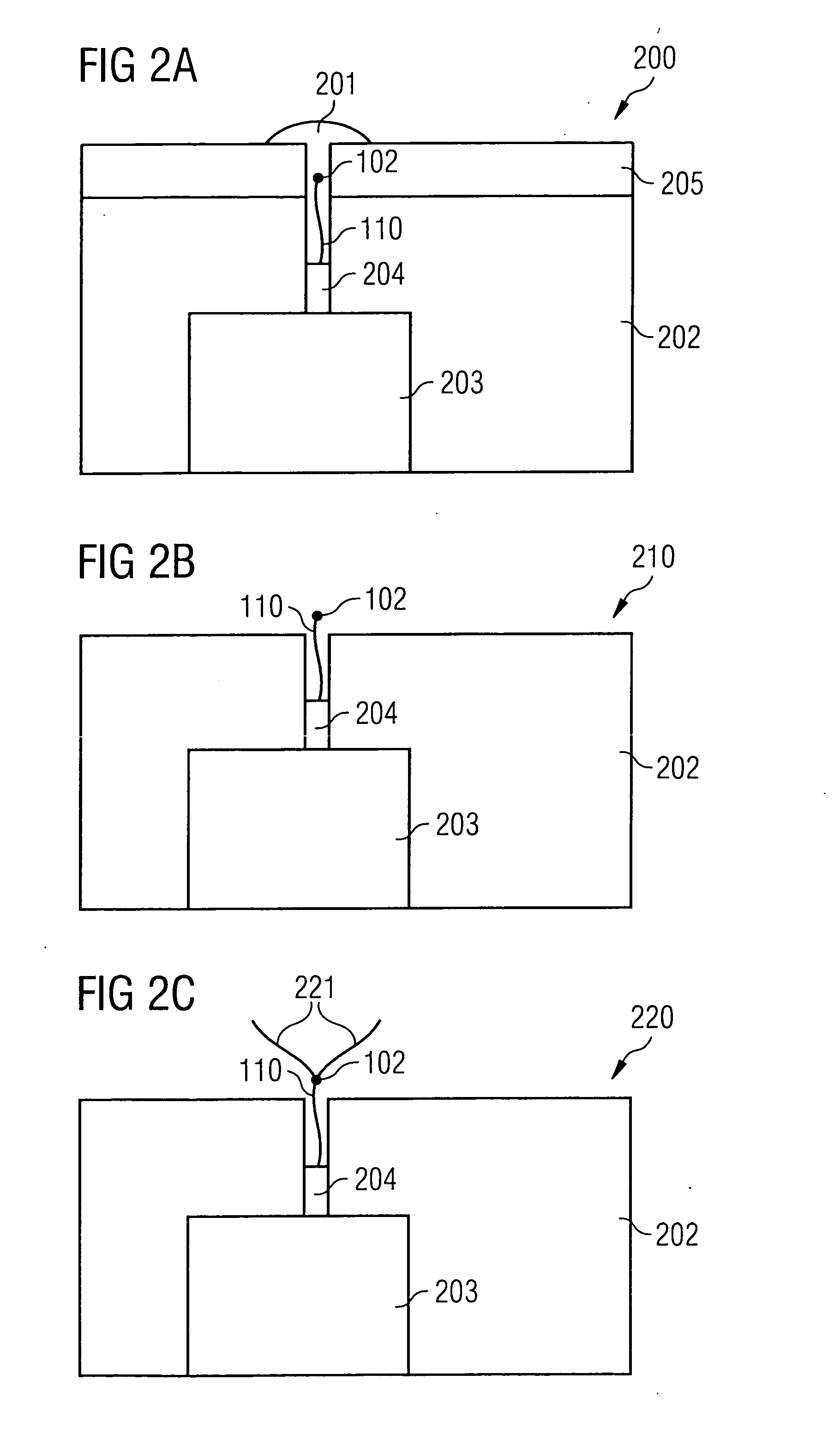Process for producing a nanoelement arrangement, and nanoelement arrangement
a nanoelement and nanoelement technology, applied in the direction of pulse technique, instruments, computation using denominational number representation, etc., can solve the problems of limited scaleability of storage media, inability to control the spatially defined formation of branched carbon nanotubes, and the limit of conventional silicon microelectronics, etc., to achieve good spatial definition, improve electrical contact resistance, and improve the effect of branching point electrical properties
- Summary
- Abstract
- Description
- Claims
- Application Information
AI Technical Summary
Benefits of technology
Problems solved by technology
Method used
Image
Examples
Embodiment Construction
[0056] The text which follows describes, with reference to FIG. 1A, FIG. 1B, FIG. 2A to FIG. 2C, a process for producing a carbon nanotube arrangement in accordance with a preferred exemplary embodiment of the invention.
[0057]FIG. 1A shows a container 100 which contains a suspension of toluene solvent 101 and iron clusters 102. The iron clusters are surrounded by a thin film of oleic acid (not shown).
[0058]FIG. 1B shows the operating state of the container 100 after carbon nanotubes 110 have been introduced into the suspension using a CVD process. The carbon nanotubes 110 are surrounded along most of their length with a protective layer (not shown) of a photoresist, and the carbon nanotubes 110 are only free of the protective layer in a region surrounding an end section of the carbon nanotubes 110. After the carbon nanotubes 110 partially covered with the protective layer have been introduced into the suspension of toluene 101 and iron clusters 102, iron clusters 102 attach themse...
PUM
 Login to View More
Login to View More Abstract
Description
Claims
Application Information
 Login to View More
Login to View More - R&D
- Intellectual Property
- Life Sciences
- Materials
- Tech Scout
- Unparalleled Data Quality
- Higher Quality Content
- 60% Fewer Hallucinations
Browse by: Latest US Patents, China's latest patents, Technical Efficacy Thesaurus, Application Domain, Technology Topic, Popular Technical Reports.
© 2025 PatSnap. All rights reserved.Legal|Privacy policy|Modern Slavery Act Transparency Statement|Sitemap|About US| Contact US: help@patsnap.com



